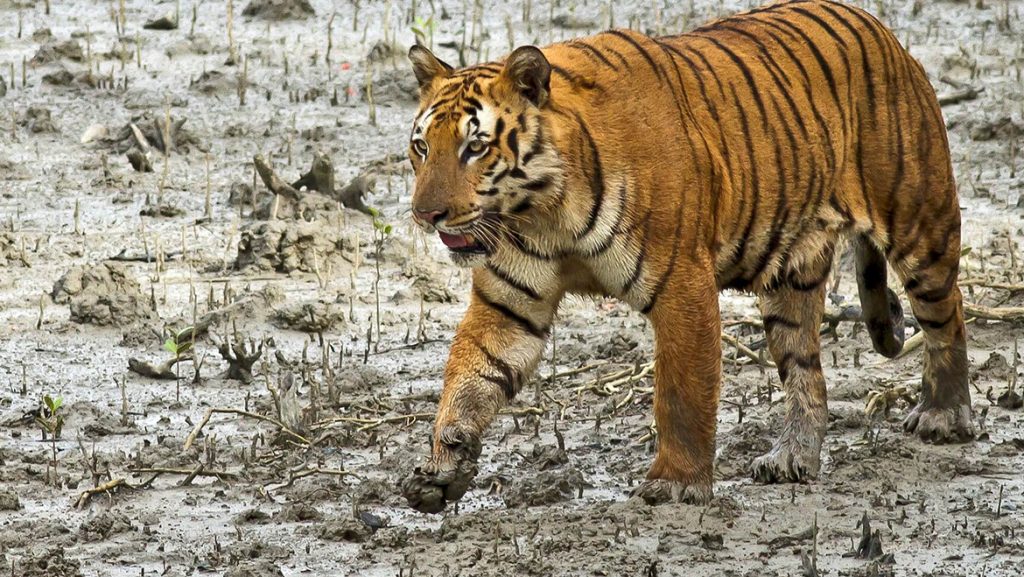Kolkata: After reports of a tiger testing positive for the pandemic COVID-19 in the United States set alarm bells ringing across the globe, wildlife experts in India have dismissed the possibility of the big cats contracting the disease at Sundarbans on account of the forest’s geographical location.
As per the latest tiger census report, the biosphere reserve in south Bengal has 88 Royal Bengal Tigers.
Pranav Chanchani, the coordinator of WWF-India’s Tiger Conservation Programme, said the unique geographical location and the topography of the reserve is an advantage that the Sundarbans’ big cats have over other tiger populations.
“Poaching and climate change continue to pose threats, but tigers in Sundarbans are not exactly vulnerable to coronavirus infection. That said, it’s always wise to take precautions,” Chanchani noted.
The reserve authorities, however, are not taking chances and are monitoring the behaviour of all 88 tigers round the clock.
The National Tiger Conservation Authority (NTCA), in view of the reports from Bronx zoo in the US, has sounded alerts for all tiger habitats in India. It has advised isolation for sick animals and personal protection equipment for keepers.
“Given the topography of Sundarbans, we know that the tigers are safe. Nonetheless, we have enhanced our 24×7 vigil as we do not want to take risks. All entry and exit points have been sealed to the Sundarbans” S Kulandivel, the joint director of the biosphere reserve, said Tuesday.
The noted tiger expert also said that human activities and interactions are a rarity at the Sundarbans – the largest single block of tidal, halophytic mangrove forests in the world – and that would definitely act as a deterrent against the disease.
“One can only enter the mangrove forests via a creek or a narrow water channel. Common people or for that matter wildlife officials would not want to go near a wild animal. So the question of getting into Sundarbans and transmission of the virus from humans is unlikely. Still, we aren’t taking any chances and have beefed up security,” Kulandivel informed.
The forest officials along with the BSF’s water patrol unit have tightened vigil across the reserve, with boats guarding the entry and exits points of the estuaries.
Apart from tigers, the mangrove reserve is also home to a variety of birds and reptiles, including the salt-water crocodile.
PTI



